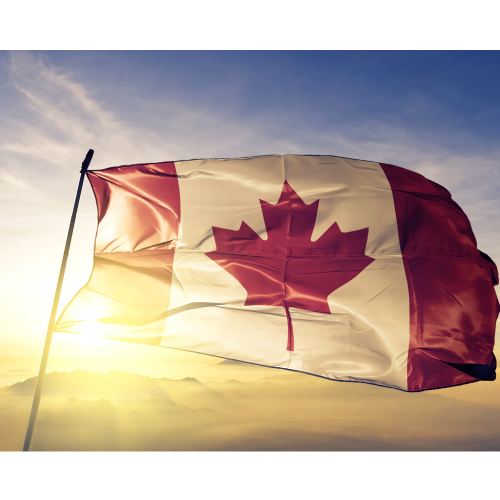Last updated: December 15 2021
Economic Statement: Recovery Well at Hand

Evelyn Jacks
The federal government released a fiscal and economic update on December 14 that brought in a small number of tax changes and a message that despite the steepest economic contraction since the Great Depression, our “one-in-a-lifetime economic trauma” is fading into history, as Canada has recovered 106% of the jobs lost during the pandemic. There is more good news, according to the government, and some red flags on the horizon:
- GDP growth of 5.4% in the third quarter which outpaced the U.S., the U.K., Japan, and Australia
- By 2023 Canada’srecoverywillbethesecondfastestintheG7, according to the OECD
- It is expected that Canada willrecoverlostGDPfivemonthsmorequicklythanafterthe 2008contraction
- Fewer businesses went bankrupt in 2020 than in 2019 and there are 6,000 more active businesses now than before the pandemic
- Seniors will be happy with a proposal to provide $742.4 million for one-time payments to GIS (Guaranteed Income Supplement and Allowance) recipients whose income was reduced in 2021 due to the inclusion of CERB or the Canada Recovery Benefit in their income
- Students who have had to repay CERB they didn’t qualify for will also be happy to know that their CERB-related debt will be offset by the amount they would have received from
 the Canada Emergency Student Benefit (CESB) in the same period. This will cost $67.9 million
the Canada Emergency Student Benefit (CESB) in the same period. This will cost $67.9 million - Employees who work at home will be pleased to know the simplified home workspace deduction, calculated at a $2 a day amount to a maximum of $400 in 2020 will be extended in 2021 and 2022 to $500
- Live performers in Canada will receive $60 million in 2022-23 under the new Canada Performing Arts Workers Resilience Fund
- Teachers will receive more under the Eligible Educator School Supply Tax Credit – a refundable 25% of up to $1,000 in supplies purchased, no matter where they are used, and this will now include electronic devices, starting in tax year 2021
- $200 million in will be returned to small businesses in carbons taxes in the provinces of Alberta, Saskatchewan, Manitoba, and Ontario starting in 2022-23
- The Refundable Small Business Air Quality Improvement Tax Credit will be available on the investment in eligible air quality improvements made between September 1, 2021 and December 31, 2022. Qualifying for the 25% credit will be a variety of expenses to purchase or upgrade heating, ventilation and air conditioning systems and other stand -along items
As for the red flags, expect your money to need to stretch over the next several months:
- Inflation is a new global phenomenon resulting from the challenge of re-opening the global economy, but in Canada, to ensure the current high rate of inflation does not stay around, the Bank of Canada’s 2% inflation target has been renewed
- The cost of housing is a big concern, which the government expects to address more fully in its next budget
- Jobs and economic growth may stall, and the government expects to address that too in the next budget
- Expect to hear more in the next budget about the Luxury Tax on Aircraft, Boats and Cars, a new investment tax credit for capital invested in carbon capture, use and storage projects, and the Digital Services Tax
- Personal income tax revenues are expected to rise 6.2% in 2021-22
- Corporate tax revenues will increase 5.8% in 2021-22
- GST revenues are projected to hit $42 billion in 2021-22, up from $29.6 billion the year before.
- Bill C-3, introduced November 26, 2021 will create two new offenses punishable with maximum penalties of up to 10 years in jail for using fear to stop health care workers or their assistants from performing their duties and/or obstructing anyone from accessing health care facilities.
- And last but not least, there is all the red ink taxpayers of the future will need to repay.
Here is a snapshot of the developments:
|
Budgetary balance |
-327.7 |
-144.5 |
-58.4 |
-43.9 |
-29.1 |
-22.7 |
-13.1 |
|
Budgetary balance (per cent of GDP) |
-14.8 |
-5.8 |
-2.2 |
-1.6 |
-1.0 |
-0.8 |
-0.4 |
|
Federal debt (per cent of GDP) |
47.5 |
48.0 |
47.3 |
46.9 |
46.2 |
45.3 |
44.0 |
|
Notes: |
|||||||
|
Faster Recovery Scenario |
|
|
|
|
|
|
|
|
Budgetary balance |
-327.7 |
-142.0 |
-52.3 |
-35.1 |
-22.0 |
-15.9 |
-6.9 |
|
Federal debt (per cent of GDP) |
47.5 |
47.9 |
46.5 |
45.3 |
44.5 |
43.5 |
42.1 |
|
Slower Recovery Scenario |
|
|
|
|
|
|
|
|
Budgetary balance |
-327.7 |
-147.9 |
-65.9 |
-51.1 |
-34.1 |
-27.9 |
-19.3 |
|
Federal debt (per cent of GDP) |
47.5 |
48.2 |
48.5 |
48.5 |
47.6 |
46.9 |
45.9 |
|
Budget 2021 Projections |
|
|
|
|
|
|
|
|
Federal debt (per cent of GDP) |
49.0 |
51.2 |
50.7 |
50.6 |
50.0 |
49.2 |
|
